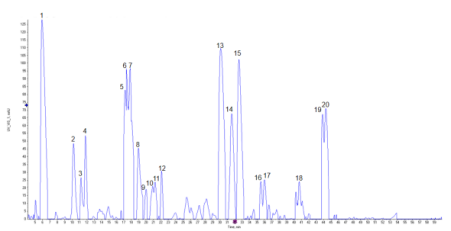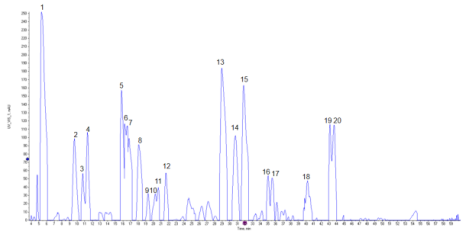HPLC-Based Peptide Mapping Assays Service
HPLC peptide mapping analysis is based on the molecular weight and amino acid composition characteristics of the protein, a proteolytic enzyme of strong specificity is selected to act on specific peptide chain sites, cleaving the protein or polypeptide into small fragments, and acquire the characteristic fingerprint of the protein through specific separation and detection methods.
Peptide mapping is one of the important means for the quality control of protein peptide drugs, which is of great significance for the structural analysis and characterization of protein drugs. By comparing the peptide map of the expressed protein with the reference standard protein, information such as protein purity and expression accuracy is obtained, and the identity between the recombinant and native protein results, post-translational modifications in the recombinant product can be identified, and unknown variations in amino acids can be detected. Comparison between peptide maps from different batches of product processed using the same method can verify the stability of the process.
MtoZ Biolabs offers specialized protein peptide mapping detection and analysis services.
Protein samples are digested by protease into small fragments for analysis. Reversed-phase high-performance liquid chromatography (HPLC) is used to separate each fragment according to the difference in polarity, with the ultraviolet absorption spectrum obtained using an ultraviolet detector. Comparing the peptide map of the expressed protein with the reference standard protein to obtain the accuracy of protein purity and expression through the position, shape, and intensity information of each peak, and comparing peptide maps from different batches to verify process stability.
Analysis Workflow
1. Protein Extraction and Sample Quality Control (SDS-PAGE, BCA Assay)
2. Proteolysis (Select Appropriate Protease to Digest Proteins after Reductive Alkylation)
3. Desalting of Samples with C18 Column (Salts in the Enzyme Reaction Solution During Enzymatic Digestion)
4. HPLC Acquisition to Generate Maps

Figure 1. Working Process
Service Advantages
1. The experimental method was verified by methodology.
2. The process is streamlined and expedited, offering a comprehensive one-stop service: sample processing - HPLC analysis - data analysis - project report.
Sample Results
The samples after proteolytic digestion are separated by high performance liquid chromatography, with data collected by the ultraviolet detector to generate the peptide map. The resulting chromatogram is as follows:

Figure 2. Chromatogram of the Reference Product

Figure 3. Chromatogram of the Sample
From the above chromatograms, it can be seen that the peptide pattern and peak time of the sample are basically consistent with those of the reference product.
Services at MtoZ Biolabs
1. Technical report, which will list the detailed instrument reagents, experimental operation process, chromatography mass spectrometry platform parameters, and experimental results (ultraviolet absorption peak map).
2. Mass spectrometry raw data.
Applications
1. Biologic Drug Research and Development
2. Drug Quality Control
3. Disease Diagnosis and Biomarker Identification
FAQ
Q1: What problems can peptide mapping solve?
The batch-to-batch consistency of the manufacturing process and the stability of cell matrix expression for production can be evaluated in the identification test of product release inspection.
Q2: What are the advantages and limitations of HPLC peptide mapping?
(1) Advantages of HPLC Peptide Mapping
① Simple and fast, no database matching required.
② The cost of the experiment is low.
(2) Limitations of HPLC Peptide Mapping
① It does not correspond to the specific peptide information of the peak map.
② References are required for experiments.
How to order?







